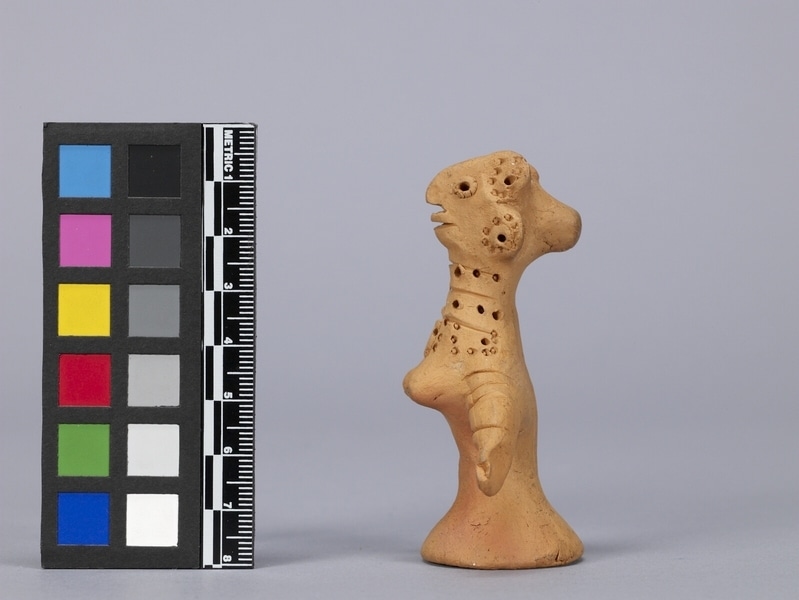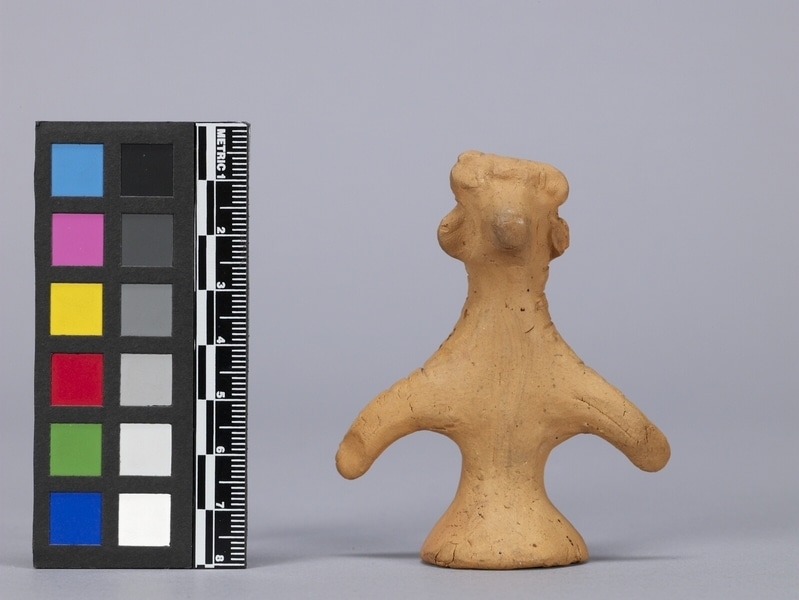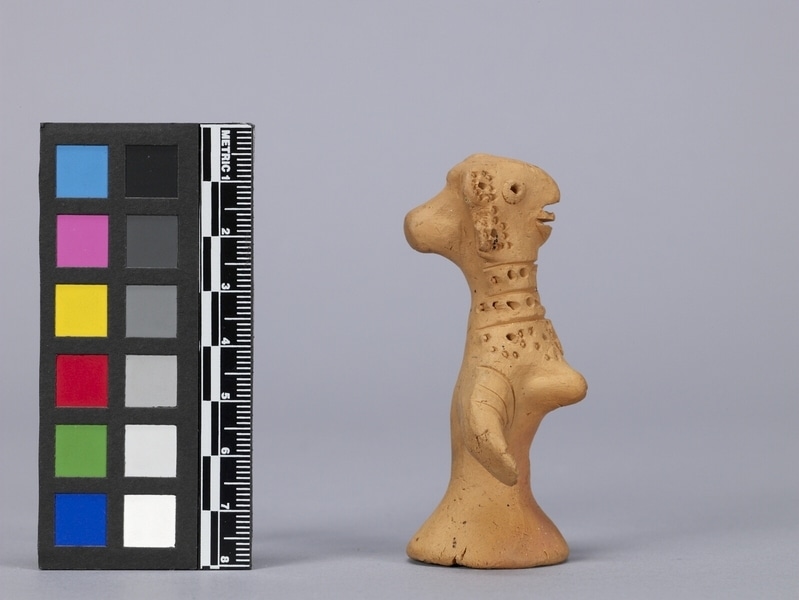Bride Doll Item Number: Ei30 from the MOA: University of British Columbia




Description
A small unglazed clay figure on a circular pedestal base. Simplicity of form reveals a female torso with extended wing-like arms, and a pinched face. There is stick-poke detail on the headpiece, collar, eyes, and nipples. Has incised lines and pelleted eyes. Hair is knotted at the back.
History Of Use
Early archeological sites verify the antiquity of clay objects in India. Whatever form they take, clay objects are implicitly sacred since clay is seen as a manifestation of 'Mother Earth', innately suggesting the abstraction of nature's primordial energies. The potters of the Kumbhakara cast (Kumaras) are heirs to a long tradition in both village and urban areas. The production of clay pots and vessels for everyday use is their regular occupation but making images for use as votive offerings is also very important. These images are variously represented as fertility figures, protective symbolsd (horses, elephants) or gods. The animal and human figures sold as toys have a close affinity in shape and character to the votive images; in fact, the same image often fulfills both purposes.
Iconographic Meaning
Bird mother motif
Cultural Context
ritual
Item History
- Made in Goalpara, Assam, India
- Collected during 1976
- Owned by Pradip Chellia
- Owned by Stephen Inglis before December 2, 1977
- Received from Museum of Anthropology Donations Fund (Funding source) and Stephen Inglis (Seller) on December 2, 1977
What
Who
- Culture
- Assamese ?
- Previous Owner
- Pradip Chellia and Stephen Inglis
- Received from
- Museum of Anthropology Donations Fund (Funding source) and Stephen Inglis (Seller)
Where
- Holding Institution
- MOA: University of British Columbia
- Made in
- Goalpara, Assam, India
When
- Collection Date
- during 1976
- Ownership Date
- before December 2, 1977
- Acquisition Date
- on December 2, 1977
Other
- Item Classes
- ceramics
- Condition
- good
- Accession Number
- 0411/0039